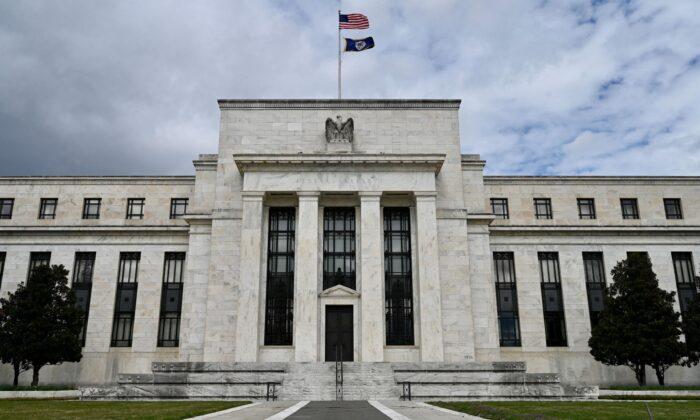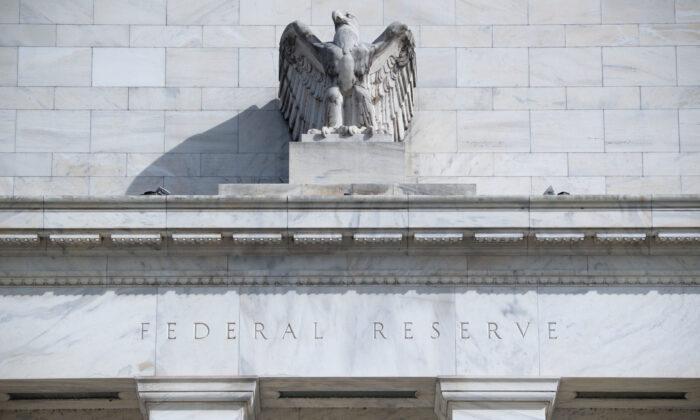A quick search of headlines from the end of 2022 confirms that much of the retail spirit was broken:
What Would Cause the Fed to Cut Rates?
• If the market advance continues and the economy avoids recession, the Fed does not need to reduce rates. • More important, there is also no reason for the Fed to stop reducing liquidity (quantitative tightening) via its balance sheet. • Also, a “no-landing” scenario gives Congress no reason to provide fiscal support, providing no boost to the money supply.In other words, if the hope of zero interest rates and a return to quantitative easing is whetting retail investor appetites, then the “no landing” scenario is problematic.
Why Future Returns May Approach Zero
The speculation of outsized returns by retail investors is unsurprising, given that most have never seen an actual bear market. Many retail investors today didn’t make their first investments until after the financial crisis of 2008–09 and, since then, have only seen liquidity-fueled markets supported by zero interest rates. As discussed in “Long-Term Returns Are Unsustainable:”“The chart below shows the average annual inflation-adjusted total returns (dividends included) since 1928. I used the total return data from Aswath Damodaran, a Stern School of Business professor at New York University. The chart shows that from 1928 to 2021, the market returned 8.48 percent after inflation. However, notice that after the financial crisis in 2008, returns jumped by an average of four percentage points for the various periods.
“After more than a decade, many investors have become complacent in expecting elevated rates of return from the financial markets. However, can those expectations continue to get met in the future?”
(Source: Federal Reserve Bank of St. Louis / RealInvestmentAdvice.com chart)
Of course, those excess returns were driven by the massive floods of liquidity from the federal government and the Federal Reserve, including trillions in corporate share buybacks and zero interest rates. Since 2009, there has been more than $43 trillion in various liquidity supports. To put that into perspective, the inputs exceed underlying economic growth by more than 10-fold.
(Source: Federal Reserve Bank of St. Louis / RealInvestmentAdvice.com chart)
Commitment to Growth
The problem is that replicating those returns becomes highly improbable unless the Federal Reserve and government commit to ongoing fiscal and monetary interventions. The chart below of annualized growth of stocks, GDP, and earnings show the outsized anomaly of 2021.(Source: Federal Reserve Bank of St. Louis / RealInvestmentAdvice.com chart)
Since 1947, earnings per share have grown at 7.72 percent, while the economy has expanded by 6.35 percent annually. That close relationship in growth rates is logical, given the significant role that consumer spending has in the GDP equation.
The market disconnect from underlying economic activity over the last decade was due almost solely to successive monetary interventions leading investors to believe “this time is different.” The chart below shows the cumulative total of those interventions that provided the illusion of organic economic growth.
(Source: Federal Reserve Bank of St. Louis / RealInvestmentAdvice.com chart)
Over the next decade, the ability to replicate $10 of interventions for each $1 of economic seems much less probable. Of course, one must also consider the drag on future returns from the excessive debt accumulated since the financial crisis.
(Source: Federal Reserve Bank of St. Louis / RealInvestmentAdvice.com chart)
That debt’s sustainability depends on low-interest rates, which can only exist in a low-growth, low-inflation environment. Low inflation and a slow-growth economy do not support excess return rates.
It is hard to fathom how forward return rates will not be disappointing compared to the last decade. However, those excess returns were the result of a monetary illusion. The consequence of dispelling that illusion will be challenging for investors.
At 4 Percent, Cash Is King
Another problem weighing against potential future returns is the return on holding cash. For the first time since 2009, the alternative to taking risks in the stock market is just “saving money.” Obviously, “safety” comes at the cost of the return, but at 4 percent or more, savers now have an alternative to investing. However, this works against the Fed’s goal of increasing the wealth effect in the financial markets.Following the financial crisis, then-Fed chair Ben Bernanke dropped the federal funds rate to zero and flooded the system with liquidity through quantitative easing. As he noted in 2010, those actions would boost asset prices, thereby lifting consumer confidence and creating economic growth. By dropping rates to zero, “risk-free” rates also dropped toward zero, leaving investors little choice to obtain a return on their cash.
Today, that narrative has changed, with current risk-free yields above 4 percent. In other words, it is possible to save your way to retirement. The chart below shows the savings rate on short-term deposits versus the equity-risk premium of the market.
(Source: Federal Reserve Bank of St. Louis / RealInvestmentAdvice.com chart)
Then it won’t be the time to take on more risk, but less.
When you start considering the implications of a market plagued by high valuations, slow growth, and the potential for less liquidity, it is easy to make a case for lower future returns.
While that does not mean returns will be zero every year, we may, by the end of the decade, look back and ask what was the point of investing to begin with?









